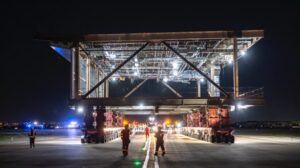As part of its ongoing US$3bn plan to overhaul and expand Terminal C, Dallas Fort Worth International Airport (DFW) has completed the move of six megastructure modules across the airfield and into place at the site of the expansion that will welcome nine gates in 2026.
The largest module was 204ft long by 68ft wide and weighed approximately 1,200 tons, and was moved across two closed runways overnight using self-propelled modular transporters.
Terminal C development
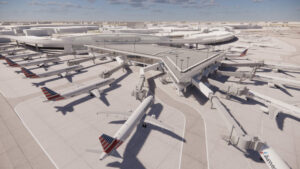
The 115,000ft2 expansion portion of the Terminal C project also coincides with the first of three phases that will completely reimagine the terminal’s existing footprint. A complete reconstruction of the adjacent parking garage is also underway, which will deliver more parking to accommodate the growth in gates. 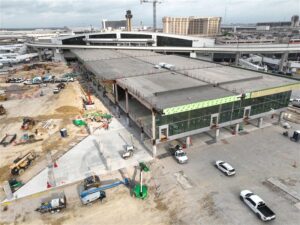
Design and construction for the first phase and expansion of the Terminal C project, as well as the expansion of Terminal A, is being managed by HNTB, KAI and ADPI. The design-build project’s contractor joint venture includes Austin Commercial, Azteca Enterprises and Alpha & Omega, with HOK and Muller & Muller serving as design team members. The project is being carried out in partnership with American Airlines.
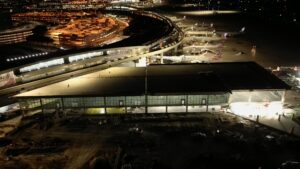
Trialling modular construction
This recent milestone has built on DFW’s use of modular construction in 2022. The airport installed mechanical, electrical, plumbing and fire-protection systems in the six modules prior to being transported to the site of the new pier-style expansion. Modules for Terminals A and C are at least twice as large as the modules installed to create the new “High C” gate area in 2022.
“Innovation is at the core of our airport’s DNA and the techniques being used to reimagine Terminal C are an example of that in action,” said Sean Donohue, CEO of DFW. “I’m proud of the DFW team for continuously pushing boundaries when it comes to proving forward-thinking construction processes. This is just one of the many important milestones on approach as we undergo this historic period of growth and expansion.”
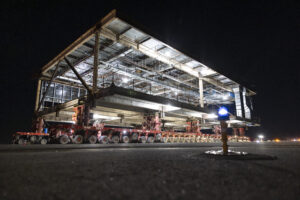
“Modular construction reduces the impact on-site by using dual-site activity,” said Mohamed Charkas, executive vice president of infrastructure and development at DFW. “This minimizes disruptions in terminal areas, keeping gate closures and airside complexities to a minimum while modules are built off-site. DFW is applying modular construction for expansions at Terminals A and C, as well as the new Terminal F.”
In related news, DFW Airport has appointed Chris McLaughlin as its next CEO, following a global search. McLaughlin will assume the role on May 19, 2025, succeeding current CEO Sean Donohue, who is retiring after more than a decade leading DFW. Click here to read the full story.

